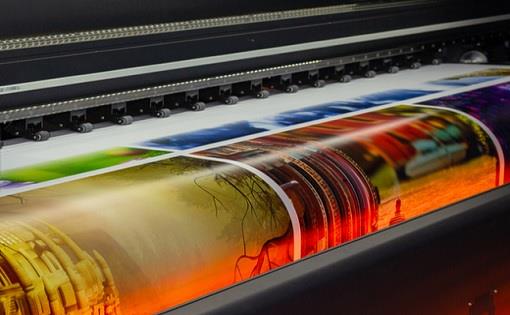The Greatest Guide To Digital Printing
The Greatest Guide To Digital Printing
Blog Article
Top Guidelines Of Digital Printing
Table of ContentsOur Digital Printing IdeasDigital Printing - QuestionsThe 25-Second Trick For Digital PrintingThe 15-Second Trick For Digital PrintingNot known Details About Digital Printing Some Known Facts About Digital Printing.Some Known Details About Digital Printing The Buzz on Digital Printing
Personalization likewise permits companies to stick out in a crowded market by producing distinct marketing products that separate them from their competitors. One of the primary advantages of electronic printing is the capability to print variable information. Each published piece can be unique, permitting organizations to develop individualized advertising materials that talk directly to their target audience.Digital printing also enables modification in the design of advertising and marketing products. With digital printing, businesses can develop designs that are one-of-a-kind and customized to their particular needs. This can consist of customized graphics, typefaces, and layouts that can help to separate them from their rivals. Another benefit of digital printing is the capacity to print on need.
Some Ideas on Digital Printing You Should Know
By printing smaller quantities of advertising materials, services can minimize waste and prevent the demand for excess supply. Digital printing is additionally functional.
By using different materials and formats, businesses can create one-of-a-kind advertising and marketing materials that stand out from their competitors and bring in attention from their target market. Digital printing additionally supplies uniformity. With standard printing techniques, there is usually variant in between prints because of differences in ink coverage, stress, and various other elements.
This consistency can aid construct client trust and trustworthiness, showing that business is committed to offering premium materials. Uniformity is particularly vital for services that want to build consumer count on and reliability. By making certain that every print is consistent, companies can reveal that they are devoted to providing high-grade materials and taking note of the information.
Not known Facts About Digital Printing

In enhancement, electronic printing produces less waste due to the fact that it can print on need and in smaller sized amounts, reducing the need for excess inventory and materials. Digital printing likewise uses less energy compared to standard printing techniques. Digital printers do not need as much energy to operate, as they do not require to warm up as a lot or utilize as much power to run.
Things about Digital Printing

Countered printing requires a plate for every shade printed. Standard offset printing is a print technique that makes use of aluminum plates to transfer ink onto a rubber sheet (often referred to as a "covering"). The image is then rolled onto the printing surface area. This printing approach is considered "balanced out" due to the fact that the ink is not transferred to the paper directly.
Everything about Digital Printing
Countered printing permits for a large range of print materials to be made use of during production. The high-quality photos produced with offset printing make it the recommended technique, specifically among visuals developers, when seeking the best color recreation, information, and professional-looking prints.
For digital inkjet printing, ink is moved straight onto the surface. Instead than relying on light weight aluminum plates and rubber coverings to transfer a picture, digital printing utilizes fluid ink during production.
Not known Facts About Digital Printing
Better color integrity describes both the precision of the shades and their equilibrium in the style. Due to the fact that countered printing can blend personalized shade inks for each and every job, it will naturally obtain the shades spot-on. Functions just check my site as well on almost any kind of sort of product. Reputable, remarkable picture high quality. Depend on balanced out printing for her response clean, distinct kinds and photos without touches or places.
It sets you back a great deal to begin a balanced out job. You need to spend money right into producing the plates, which takes time. Once you have actually invested it, all of the products are all set to go, and you'll spend less on large balanced out jobs than an electronic print, which is regarding the same per item no matter just how big the work obtains.
Each print equals. You run the risk of less strange variants caused by inequalities in water and ink. Digital printing is less expensive for low-volume work. The price each drops for digital printing, so at some time, they crisscross. Changing details within a solitary print work. Say you were printing out postcards marketing a concert.
3 Simple Techniques For Digital Printing
While digital printing or inkjet printing is the favored choice in the present times, there are compelling factors to transform from balanced out to digital printing systems. When printing offset or electronically, critical choices and procedures are included in shade matching.
Whichever the case, the shade will certainly need to be matched. Color matching of electronic printer ink is no longer testing with dyes and pigments. Industrial inkjet printing offers versatility for printing on numerous various substratums. Digital printing is suitable for clients who do not require longer runs and warehousing products.

One advantage of electronic printing is picking from a broad array of electronic substratums. With digital printing, the price of the substratum in the total work is tiny.
Some Known Incorrect Statements About Digital Printing
drop-on-demand is the second printing technology to think about. Constant inkjet systems require significant upkeep, even more operator training, and higher downtime. Equipment prices in inkjet printing are much lower than offset printing as there are no plate-making, plates, and press expenditures. Beyond the capital spending, the prepress equipment and printing presses require very skilled operators in offset printing, which includes labor expenses.
Report this page